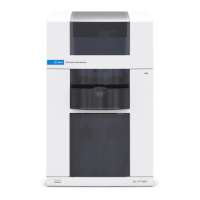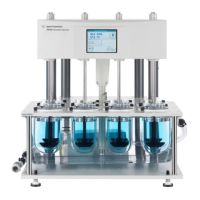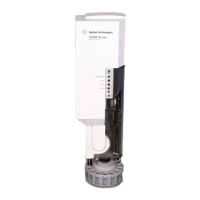78 Operation Manual
4 Operating in Chemical Ionization (CI) Mode
Other Reagent Gases
Other Reagent Gases
This section describes the use of isobutane or ammonia as the
reagent gas. You should be familiar with operating the
CI-equipped 7200 Q-TOF GC/MS with methane reagent gas
before attempting to use other reagent gases.
Changing the reagent gas from methane to either isobutane or
ammonia changes the chemistry of the ionization process and
yields different ions. The principal chemical ionization
reactions encountered are described in general in the Agilent
7200 Accurate-Mass Q-TOF GC/MS Concept Guide. If you are
not experienced with chemical ionization, we suggest reviewing
that material before you proceed.
Isobutane CI
Isobutane (C
4
H
10
) is commonly used for chemical ionization
when less fragmentation is desired in the chemical ionization
spectrum. This is because the proton affinity of isobutane is
higher than that of methane; hence less energy is transferred in
the ionization reaction.
Addition and proton transfer are the ionization mechanisms
most often associated with isobutane. The sample itself
influences which mechanism dominates.
Ammonia CI
Ammonia (NH
3
) is commonly used for chemical ionization when
less fragmentation is desired in the chemical ionization
spectrum. This is because the proton affinity of ammonia is
higher than that of methane; hence less energy is transferred in
the ionization reaction.
CAUTION
Do not use nitrous oxide as a reagent gas. It radically shortens the life
span of the filament.
